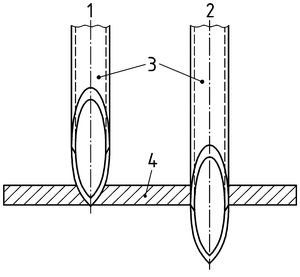KANBrief 4/18

Personal protective equipment is often essential when needles are to be handled. As yet however, suitable test methods do not exist for the testing and assessment of products such as protective gloves for the handling of needles. A new material test method adds a realistic parameter to existing puncture tests, and was recently standardized in a DIN SPEC (PAS).
Needle puncture injuries constitute a hazard for employees in a range of sectors, including the health services, law enforcement and waste disposal. Injuries caused by contaminated needles harbour the risk of blood-transmitted infections. These include human immune deficiency (HIV) and hepatitis B and C. This risk can be reduced substantially by personal protective equipment (PPE), as well as by technical and organizational measures. Harmonized standards support manufacturers of protective gloves, and protective clothing in general, in demonstrating these products' conformity with the European PPE Regulation. Reference is normally made to EN 388 (EN 388:2016-11, Protective gloves against mechanical risks) for assessing the protection provided by gloves against mechanical hazards. This standard also covers assessment of the puncture resistance. However, a test employing a test probe with a diameter of 4.5 mm does not yield information on the protection provided against thinner, pointed objects, as indeed is stated correctly in the standard. Alternative methods for assessing the resistance to puncture by needles were published for example by the German Federal institute for Occupational Safety and Health (BAuA) in 2001 (cf. Macheleidt, M., Windel, A., Mehlem, P., Entwicklung einer Prüfmethode zur Bestimmung der Stichfestigkeit von Schutzhandschuhen gegenüber medizinischen Kanülen, BAuA (eds.), 2001, pp. 54–63) and the American Society for Testing and Materials (ASTM) in 2011 (cf. ASTM F2878-10, Standard Test Method for Protective Clothing Material Resistance to Hypodermic Needle Puncture).
DIN recently supported an interdisciplinary expert committee in the standardization of a novel method for testing the resistance to puncture by needles. The DIN SPEC 91365 (DIN SPEC 91365:2018-09, Needle Puncture Testing) specification serves to supplement the above tests. It relies upon a simple test arrangement and enables the perforation force, which was not previously recorded, to be determined in addition to the puncture force. The puncture force is an established parameter and is defined as the maximum force during the process of puncture of the test specimen. By contrast, the perforation force describes the force at the point of emergence of the needle tip from the test specimen. The mechanical protective action of the barrier may already have been lost at this point, i.e. before the maximum force has been reached. Electronic detection is used to measure the perforation force. A thin, conductive film underneath the test specimen is connected with the needle to form an electronic switch. During the puncture test, the force arising is detected at the point in time at which the switch closes. Perforation detection thus yields a realistic parameter that takes account of the point in time at which the body is first exposed to the needle.
The test method was standardized in accordance with the procedural rules for a DIN SPEC (PAS). Participation was open to all interested experts. A high level of consensus was sought, and freedom from contradictions with the German body of standards was assured. Issues concerning evaluation and classification of the test results have not yet been resolved. The DIN SPEC (PAS) must therefore be regarded as a starting-point for transfer of the material test method to a DIN standard and thereby for optimization of the selection of PPE for use during the handling of needles in consideration of the specific risk.
Dr Nikolaus Mirtschin, Smarterials Technology GmbH
n.mirtschin@smarterials-technology.de
Dr Thomas Schochow, VPA Prüf- und Zertifizierungs GmbH
schochow@vpa-gmbh.de
Safety should not be addressed in PASs.
KAN sees considerable potential for occupational safety in the test method presented here. A document that includes safety-related content and is itself intended as a supplement to tests conducted in accordance with a harmonized European standard must however be developed in accordance with the traditional standardization rules in force. KAN's position paper concerning the inclusion of safety and health aspects in specifications (pdf) states that DIN SPEC (PAS) documents are by definition not a suitable means of governing these aspects. The PAS procedure does not make involvement of the public a binding requirement, and the text of the specification need not be developed by consensus. These are however both requirements in order for all stakeholders to be able to present positions and for the document adequately to reflect the public interest.
In advance of the project, KAN opposed the use of the PAS procedure for its development, instead proposing the DIN SPEC (prestandard) procedure, which is conducted in accordance with the standardization rules set out in DIN 820. The project was conducted under the DIN-Connect funding programme, of which a DIN SPEC (PAS) is the mandatory result. Sadly, DIN and the experts present could not be persuaded to deviate from this principle. It is to be welcomed that efforts are now being made to convert the test method into a standard. KAN is therefore proposing to recruit experts from the prevention departments of the German Social Accident Insurance Institutions for this endeavour.
Dr Michael Thierbach, KAN Secretariat